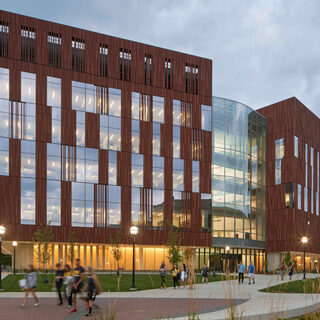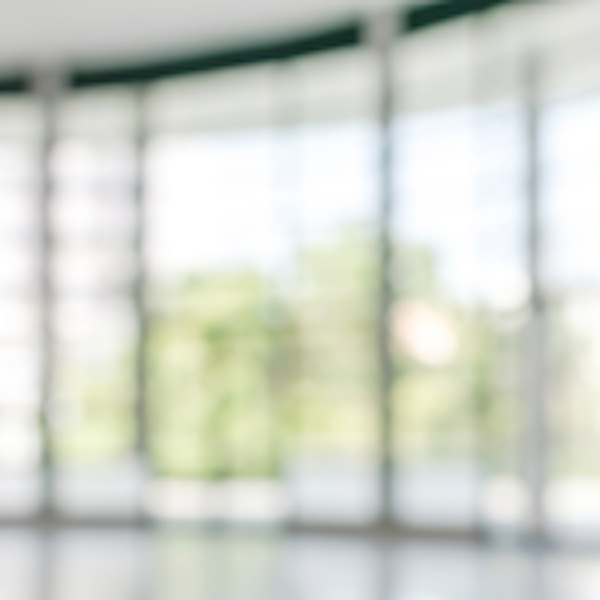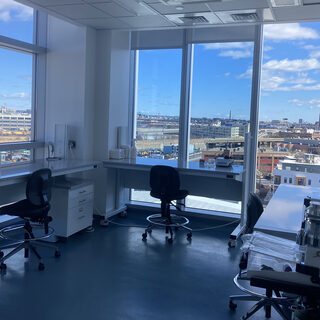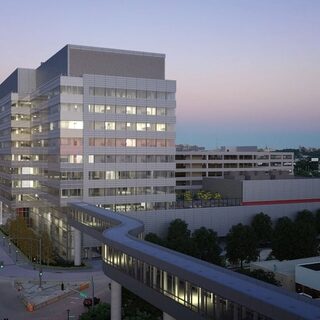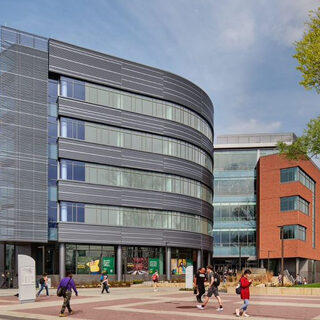Tradeline's industry reports are a must-read resource for those involved in facilities planning and management. Reports include management case studies, current and in-depth project profiles, and editorials on the latest facilities management issues.
Latest Reports
Groundbreaking Building at UMichigan Collocates Research Labs, Classrooms, and a Museum
The University of Michigan has transformed the way science is conducted and communicated by integrating the Museum of Natural History into its uniquely designed $261 million Biological Sciences Building (BSB). The 312,000-sf building opened for classes in 2018, and the museum opened a year later, facilitating connections between university researchers and the community. More than 200,000 members of the public visited the museum within the first year, underscoring the university’s belief that science is a social, not merely transactional, interaction.
Top 10 Reports of 2022
2022 offered a glimpse of what the post-pandemic era might look like, with a redefinition of “workplace” in a hybrid setting; examining the benefits and challenges of renovation vs. new construction; and using data to drive complex facilities decisions. The following are the reports that Tradeline readers found most helpful in 2022, as they focused on strategic space planning in this shifting environment:
Best Design Concepts for Multi-Use, Flexible, Scalable Rodent Vivariums
Creating an efficient, productive, and safe rodent vivarium of any size begins by determining the current and future needs of both the researchers and the animal care staff. Collecting data from users throughout the process of new construction or renovation ensures the design aligns with their research, equipment requirements, utility specifications, and animal care needs.
Optimize Space Planning by Measuring Lab Utilization and Productivity
Data-driven tools that objectively measure the utilization and productivity of lab space can provide academic institutions with valuable insights for making key budget decisions about renovation, new construction, and allocation of existing resources. In 2018, space planners at Washington University School of Medicine (WUSM) in St. Louis, Mo., set out to quantify the utilization of wet lab space as part of an effort to achieve ambitious growth and recruiting goals. The process led to the creation of a rolling five-year needs study with annual reporting of lab space utilization and researcher productivity using benchmarked performance metrics. The reporting tool now provides university administrators with accurate, objective data on a yearly basis that helps them better utilize existing resources, improve adjacencies, and validate the potential need for renovations and new construction.
Hub of Collaboration, Learning, Creativity, and Groundbreaking Technology at the Heart of George Mason University’s Core Campus Project
George Mason University’s new Horizon Hall is being called a “game changer” as it anchors the Core Campus Project, which facilitates multidisciplinary education, active student learning, and technological innovation with ample flexibility to accommodate evolving teaching modalities. In addition to this new construction, the project includes theater renovations; the addition of green spaces, such as a meditation garden and amphitheater; expansion of a central outdoor space; the demolition of two older buildings; and extensive upgrades to the utility infrastructure.

